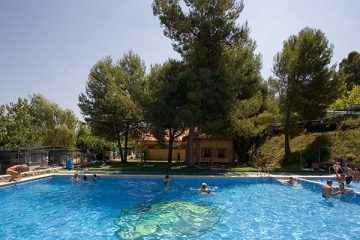How and why to use estar and ser. Some language, some culture and a bit of philosophy.
When visiting Valencia or any other city in Spain it is always a plus if we use the language properly. Mostly because we do not want to scream ‘useless tourist’ by asking a ‘compadraaay’ (because it is not Mexico) where the best brojitos are so you can enjoy the sun with your ‘hombraay’.
Although officially Valencian (Valenciano) is Catalan, the majority of people speak Spanish in Valencia. Regardless if you are learning Spanish or camping through the Valencian area it is always handy to have a good grip on the language.
In our experience English speakers generally have difficulty using Estar and Ser. Specifically how to conjugate Estar and how to conjugate Ser. Read a bit further and understand that Estar and Ser are unique to the Spanish language and how they shine light on a bit of the Spanish view on life.
First and foremost, let us look at how to conjugate estar. Then at how to conjugate ser.
Estar = To be. Estar is used to speak about something temporary, for example I am tired, or I am hungry. Take a look at how to conjugte Estar.
- Yo Estoy
- Tu Estás,
- El/Ella Está,
- Nosotros Estamos,
- Vosotros Estais,
- Ellos Están.
Ser = Be. Ser is used to speak about things that are not temporary. For example, I am Spanish, or I am a man. Take a look at how to conjugate Ser.
- Yo Soy
- Tu Eres
- El/Ella Es
- Nosotros Somos
- Vosotros Sois
- Ellos Son
Conjugate Estar in the preterite form. In English we would say “I was”.
- Yo Estuve
- Tu Estuviste
- El/Ella Estuvo,
- Nosotros Estuvimos,
- Vosotros Estuvisteis,
- Ellos Estuvieron
Conjugte Ser in the preterite form. In English we would say “I was” as well.
- Yo Fui
- Tu Fuiste,
- El/Ella Fue,
- Nosotros Fuimos,
- Vosotros Fuisteis,
- Ellos Fueron.
Why do we use Estar and Ser
When we first learn how to use Estar and how to use Ser our teachers give us a similar explanation to the one above. “Use Estar when talking about something temporary, and use Ser when talking about something indefinite”.
The Sapir – Whorf hypothesis argues that the way we think may be influenced by the way we use our language. Ergo, the way we use Estar and use Ser would have an influence on how we think. For example, a native Spanish speaker will not say soy muerto, but instead estoy muerto.
This leaves us foreigners with two thoughts about why we do not use estar and why we do use ser in this case. The first and most obvious one is that the Spanish may believe death is not permanent.
It is true in Spanish that a criteria for when we conjugate Estar and conjugate Ser is if it is permanent or not. A more advanced grip of Spanish point to the use of Ser when referring to something that are part of our reality (my sources tell us in French it is called Reel). These are facts where no further explanation is needed.
When using Estar, we refer to things that are not part of our reality. These are things that you need to experience more. Potentially, estoy muerto shows a mindset that we are all here to further understand death and accept it as a part of our reality.
Final Thoughts
Hopefully this was a new insight into the language and it helps understand when to use Estar and when to use Ser. The two are very closely related which makes it hard to conjugate but with some practice we are sure you can use them without thinking twice.
Special credits to the impeccably gifted Stefani for the language insider and to Mauricio and Yana for helping finalize this piece.











